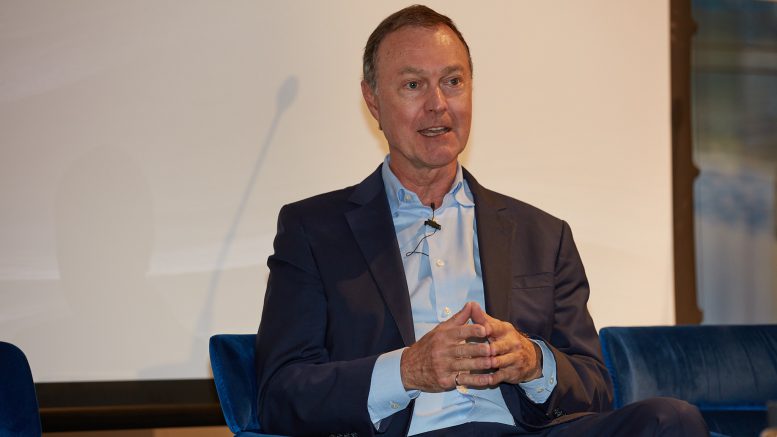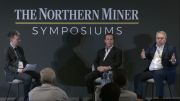Don Lindsay, who led Teck Resources (TSX: TECK.A/TECK.B; NYSE: TECK) for 17 years, backed the company’s case behind selling coal assets to recoup billions in valuation.
Teck’s Quebrada Blanca 2 open-pit mine in northern Chile could be valued at seven times earnings before interest, taxes, depreciation and amortization (EBITDA) if owned by a copper-specific competitor such as Freeport-McMoran (NYSE: FCX) compared with three times EBITDA as it sits in Teck’s portfolio, Lindsay told The Northern Miner’s Canadian Mining Symposium in London on Thursday.
“You’re literally leaving billions and billions of market value on the table if you kept the company in that structure,” said Lindsay, who left Teck’s CEO post in May. “It became imperative to split the coal from metals.”
The coal unit spinoff should be completed by year-end, the company said this week. It’s weighing a US$8.2 billion offer from Glencore (LSE: GLEN) and interest from India’s JSW Steel (NYSE: JSTL) that may be snagged on sour Ottawa-New Delhi politics, as well as attention from Franco-Nevada (TSX: FNV; NYSE: FNV) founder Pierre Lassonde. The effort hasn’t been straightforward after Teck shareholders rejected an initial separation plan last year and the company spurned an offer from Glencore to buy the entire company.
Watch a video clip below:
Lindsay, who is now chairman of Manulife, talked up the coal business, said nationalism has little place in mining and was waiting to see more government action on critical minerals. As well, he championed persistence, dreams and opportunity to thrive in the industry.
Coal value
The long-term coking coal price is forecast to increase because major suppliers, such as BHP (NYSE: BHP; LSE: BHP; ASX: BHP), Anglo American (LSE: AAL) and Glencore, face headwinds of higher royalties and declining resources while steel demand grows, Lindsay said.
All the while investment funds holding some US$60 trillion skirt coal because of its polluting reputation despite demand for it in making steel that’s vital for decarbonization. Teck’s coal business generated $35 billion in EBITDA since it began in 2008, Lindsay said.
“It’s only going to get better because that same investment limitation as well as for institutions mean there’s less capital available so steelmaking coal supply is going to go down,” he said. “The global population is still growing, demand for steel is going up and it’s still going to be blast furnaces, particularly in China. So that business is looking incredibly valuable.”
The Canadian nationalism that greeted Switzerland-based Glencore’s bid for Teck has little place, he said, when mining is global and Glencore employs more Canadians. Teck may be the country’s largest diversified miner, but most of its assets are overseas except for coal. If Canada restricted ownership, we should wonder how other countries would treat Canadian companies like Teck and Barrick Gold (TSX: ABX; NYSE: GOLD), Lindsay said.
The industry is going through faster cycles of deeper depths and higher heights than it has, requiring endurance and steady decision-making to pounce when circumstances permit, he said. The roughly US$7.8 billion Quebrada Blanca 2 took 15 years to develop and the project should have been acquired by Xstrata (now part of Glencore) and Anglo American, he said.
“We were able to sneak in there,” Lindsay said. “We didn’t know it was going to become 8 billion or 10 billion tonnes, one of the largest resources in the world, but that’s like the mining industry, and particularly exploration. It’s all about a licence to dream, right?”






Be the first to comment on "CMS: Ex-Teck CEO Lindsay touts coal sale to boost stock"